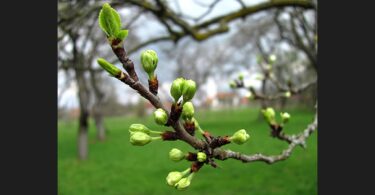Reprinted courtesy the author from the website of the Victorian College of Classical Homoeopathy http://www.vcch.org/
Most important questions have two extreme points of view. When both sides are looked at in their entirety the truth often lies somewhere between the two extremes. The skill is to take all the good components, ignore the rest, and come up with a truth, or a methodology, that takes the middle ground and allows for true knowledge. In the case of a health system, this means a deep and reproducible way of helping to heal without being too extreme either way.
Yes, the Vital Force makes mistakes – a fever too high, pain to the point of death. There is a difference between recognizing a mechanism that is trying to do its best and knowing when it is failing. The idea (naturopathic) that the body always knows what it is doing is dangerous. However, the idea that the Vital Force never knows what it is doing (conventional medicine) is also dangerous. The middle way is what good homeopathy is all about – recognizing that the Vital Force is sending a message and then reading that message correctly.
How do we read that message?
Through signs and symptoms.
What is a symptom?
A deviation from the norm, a pattern that shows as a modality, a pattern that means the patient is sick.
Understanding the patient
Some patients have so many signs and symptoms it is easy to get lost. Many of us were taught to go to the mentals. But if ever there was a labrynth of information it is within the mentals, and just as difficult are the emotions. But do not think it will take years and years to work out your case. There is a sure fire way to get a good set of signs and symptoms: the body. As illness permeates through the system – from energetic imbalance, to mental, emotional and finally physical imbalance, its presentation becomes more gross, more material – and much easier to read. As each layer of illness is only a representation of the whole, why choose the most difficult part to examine? The mind moves and changes and tricks even itself, let alone the practitioner. The emotions sway and intensify depending on the environment and most patients put on their best front when discussing themselves. Even a third party will be biased dependent on their relationship to the patient. The state of the mind and emotions (after the right remedy) will improve – so they are important parts of the picture. But to find the remedy – know the body.
Which remedy?
Homeopathy provides safe energy medicines. But how do we know when our remedies are right and when they are wrong? A remedy may read perfectly in the materia medica or online but still not make any difference to the patient. A remedy may not read perfectly but do an amazing job. Why? Because materia medicas are imperfect. They are just a summary of a remedy written by one particular practitioner/author, based on the cases they have seen or read about. Or they may be an extrapolation from herbal folklore or a subjective interpretation from a proving. But are those cases or descriptions the same as your case? Perhaps the same remedy is required but the materia medica doesn’t seem to read the way your patient presents. So what to do? There is a simple way,and made much more easy since the 1990’s due to technology and the development of repertorisation software.
Our repertories contain every piece of information about a remedy. Information derived from provings and sorted into usable pieces of information called rubrics… ALL the information about a remedy – not just a brief summary. Repertorisation is full, complete – a totality if you wish. Always repertorise to find a group of remedies that cover the case. No matter how clever, knowledgeable and experienced you are, there will always be a patient who needs a remedy that you supposedly “know” who won’t get that remedy from you. That’s because you can never “know” a remedy. It is a fallacy within homeopathy – promoted over and over – and yet always incomplete.
The most important symptoms to repertorise with
Jump past the mind, over the emotions and head to the back of the book (or software). Find the generals, outlined in full by the second most important homeopath of all time. Clemens Von Boenninghausen understood that provings had to be sorted into usable pieces of information and promoted repertorising as early as the 1830’s. But more than this, he theorized (and proved) that remedies are more easily found through generalizing the case. A totality of general symptoms will bring up a range of potential remedies.
There is one further step – which is very important – and it involves the body too. The elusive miasm.
Miasms
Miasms are taught in every homeopathic college around the world. They’re taught as inherited diseases, types of character or even types of symptom presentation. There are more than 100 interpretations of the elusive information that Hahnemann left us in his 1828 work on the Chronic Miasms. Homeopathic Facial Analysis (HFA) is another interpretation but different in that it uses the body (the face) to understand the internal energy within us all – our dominant miasm. And grounded in that after 18 years of research and application, this method continues to shine. Cases that multiple homeopaths have not been able to shift, are solved and moved in a positive direction simply because the dominant miasm of the patient is matched to a totality remedy which itself has a dominant miasm.
Every patient has a dominant miasm for life. Every remedy has a dominant miasm for life. This underlying part of us and the underlying part of each remedy is energetic. When the two energies come together, deep healing can occur. Every feature on the face is influenced by one of the three primary miasms – psora, sycosis or syphilis. The totality of those features equals one of the following seven miasms – psora, sycosis, syphilis, syco-psora, syco-syphilis, tubercular or the cancer miasm. But interestingly the diseases matched (theoretically) to those miasms – are not exclusive to the people within each miasm. That is – any miasm can bring about a skin problem, warts, inflammation, destruction, bone pain or cancer. So a syphilitic dominant patient can suffer with skin problems and a psoric dominant patient can have mental illness and ulcerations. There is a tendency towards symptom typology of the traditional miasm/disease – but those symptoms and any subsequent disease is never exclusive to any one miasm. This means that any patient can get any disease and no disease is specific to or based on any miasm. In fact, if we drop the idea of diseases matching miasms in any shape or form, we become better practitioners.
So if we cannot use the disease outcome or even the idea of an inherited disease to determine the miasm of the patient, what are we left with? The answer is, we have the face. Every feature is marked and formed by the internal energy that is the miasm of the patient. Not an inherited disease, but an indwelling defense mechanism that operates at a deep level and effects our mental, emotional, immune, nervous and endocrine systems. A defense mechanism that can be in balance (health) or out of balance (illness). A defence mechanism that can be put back into balance through the correct totality/miasm remedy.
After almost 20 years of research and practical application, VCCH (Victorian College of Classical Homeopathy), led by Grant Bentley and his associates are CONVINCED that the miasm is a defense mechanism – a lifelong energetic pattern that rises to the foreground when stress is high enough to trigger a response. Stress can be anything, from emotional (fears and anxieties) to overwork, to boredom, to laziness, to lack of exercise or a poor diet. What is a stress to one person may not be a stress to another, but for most of us the big ones are over/under work, over/under eating, over/under exercise. But there are many other stresses that can lead to an illness that won’t fully clear (a chronic disease). Contact with bacteria or viruses that the body cannot completely throw off, inherited weak areas of our body that always flare under stress, a tendency towards inflammation or infections. There are two parts to finding the right remedy for chronic disease. A simple formula that leads to successful remedies is:
Totality + Miasm = Successful Remedy
- Totality – find the clearest general patterns (symptoms) to the case
- Miasm – analyse the facial structure to determine which of the seven miasms the patient belongs to
- Repertorise the general symptoms
- Find the best matching remedy which matches the totality and the miasm
AND
Look at obstacles in the environment such as :
- Diet – is it healthy and fresh? Is the quantity intake moderate?
- Exercise – is the patient moving daily at least 30 minutes and preferably more?
- Enjoyment – is the patient able to partake in activities with others which they enjoy?
For more information about how to use totality/miasm prescribing and Homeopathic Facial Analysis (HFA) see –
What is Homeopathic Facial Analysis?
Editor’s note: Below are some upcoming courses on Homeopathic Facial Analysis:
Homeopathic Facial Analysis (HFA) – Foundation course online with Grant Bentley. https://vcch.org/content/hfa-foundation-course
HFA Workshops 2017 (Australia). October 12-19 https://vcch.org/content/hfa-workshops
Lectures by Grant Bentley in a relaxed setting with accommodations, meals and day tours.
PANDAS Reaching out – A natural and homeopathic approach. Book by Grant Bentley. http://vcch.org/content/pandas-and-homeopathy-0
PANDAS is a syndrome of the 21st century that is ruining the lives of children and their families. Presenting as a mix of neuro physical disorders, along with psychiatric behaviors, PANDAS is both destructive and formidable. But there is hope. PANDAS – Reaching out, A natural and homeopathic approach, details how naturopath and homeopath Grant Bentley works with the illness and how he builds up health to bring about change. The book highlights how the illness develops, what can be done with diet and exercise, as well as the support of constitutional prescribing. Grant discusses just how much can be expected with case examples. Both compassionate and to the point, this book shows parents that PANDAS is not a life sentence but an opportunity to bring about health and balance using a natural approach.
About the Author Grant Bentley (ND Dip Hom Grad Dip Psych. Th reg AROH, ATMS) has 25 years’ experience in the treatment of chronic illness and is known world-wide for his specialized methodology HFA (Homeopathic Facial Analysis). He is the author of several books including Appearance and Circumstance, Homeopathic Facial Analysis, Soul & Survival and How Aphorism 27 Changed the World. Grant works with children and their parents from many countries to bring about realistic and deep change in the lives of children with PANDAS.





